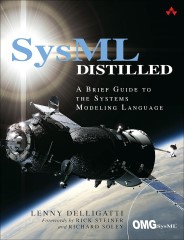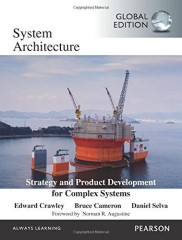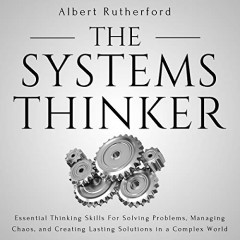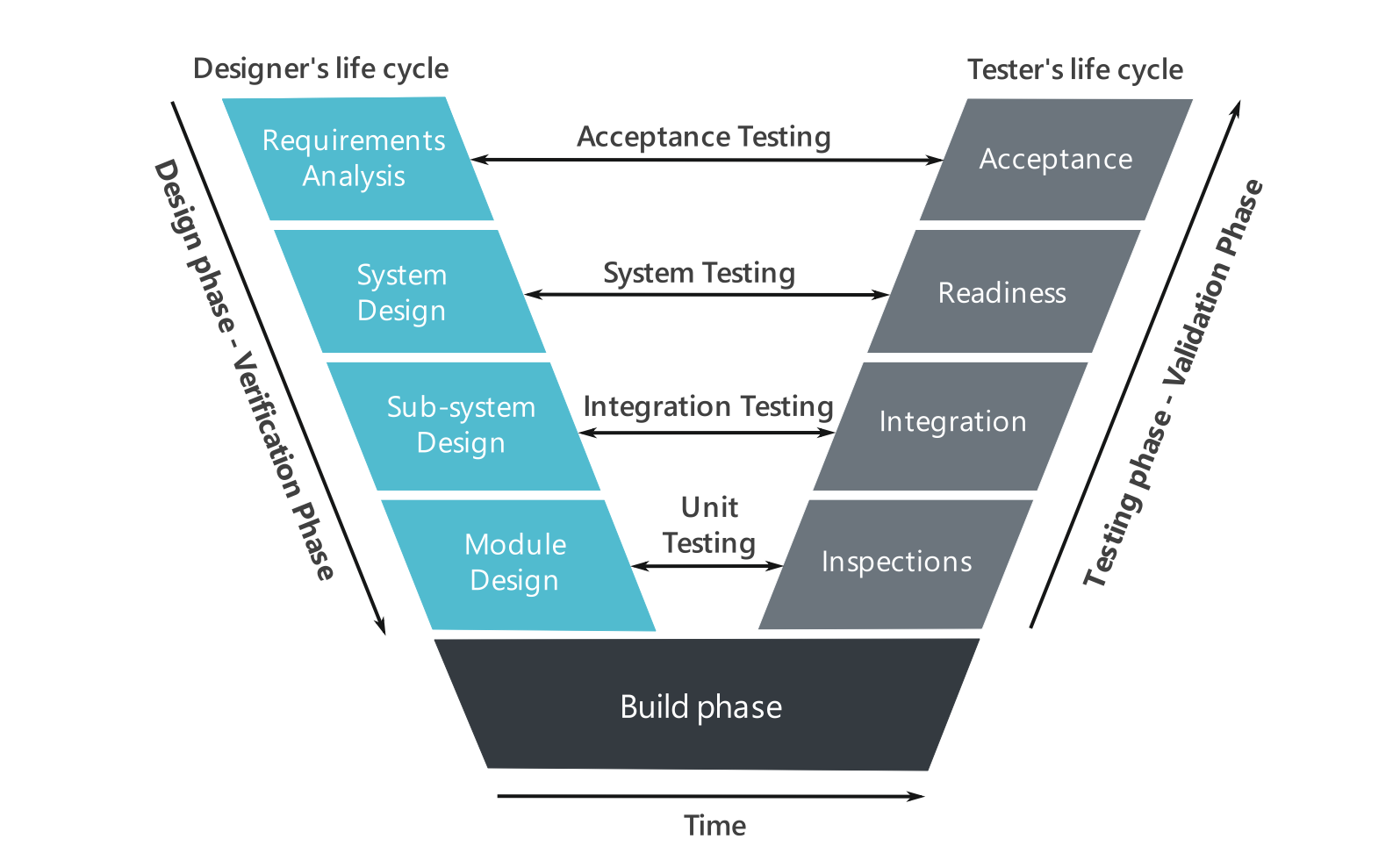Systems engineering is an interdisciplinary approach that ensures the successful realization, utilization, and retirement of complex systems. This field encompasses the entire lifecycle of a system, from initial concept to deployment and maintenance. A critical aspect of systems engineering is the definition and management of boundaries, which delineate the scope and limits of the system-of-interest.
One of the most challenging elements of systems modeling is defining the boundaries between systems. Different boundaries can lead to drastically different system models and outcomes, making the selection of the “best” boundaries crucial for the success of an engineering project. Boundaries in systems can be both physical and conceptual, influenced by various factors and stakeholders.
Table of Contents
- 2. Misconceptions of Systems Engineering: Boundaries
- 3. Are System Boundaries a Necessary System Element/Feature/Construct?
- 4. Necessity for Defining Scope in Engineered Systems
- 5. Demarcating ‘Inside’ vs. ‘Outside’
- 6. Best Practices for Defining System Boundaries
- 7. Case Study: Effective Boundary Definition in Practice
- 8. Advanced Concepts in Boundary Definition
- 9. Conclusion
1. Purpose of the Article
Despite its importance, defining system boundaries is often misunderstood or overlooked, leading to misconceptions that can have significant impacts on system design and implementation. The purpose of this article is to dispel these misconceptions by exploring the nature and necessity of system boundaries. We aim to highlight best practices in boundary definition, demonstrating how clear boundaries contribute to successful system engineering outcomes.
We begin with an exploration of whether system boundaries are a necessary construct in systems engineering. Through various examples and analogies—including an examination of an automotive engine and the boundaries within an aquatic ecosystem—we will elucidate the fundamental importance of boundaries in both natural and engineered systems. By doing so, we set the stage for discussing practical strategies for identifying and leveraging the most effective boundaries for different modeling goals.
In systems engineering, boundaries are more than arbitrary lines; they represent critical decisions that affect the design, functionality, and management of systems. By understanding the role and impact of boundaries, system engineers can create more effective, reliable, and innovative solutions.
In the following sections, we will delve into the nuances of system boundaries, examining their conceptual underpinnings and practical applications. We will discuss observable functions and outputs at these boundaries, the interfaces that define inputs and outputs, and the process of identifying optimal boundaries in complex systems. Case studies and real-world examples will be interwoven to illustrate these concepts in action, providing a comprehensive understanding of why defining system boundaries is a best practice in systems engineering.
2. Misconceptions of Systems Engineering: Boundaries
Common Misunderstandings
One of the most pervasive misconceptions in systems engineering revolves around the idea that system boundaries are rigid, physical constructs that naturally exist in the world. In reality, boundaries are often arbitrary and are defined based on the needs and perspectives of the engineers and stakeholders involved. This misunderstanding can lead to significant challenges in system modeling and project execution.
For instance, consider the boundary of an automotive engine. Where exactly does the engine end and the rest of the car begin? As illustrated by the example of a Modern Cars engine bay, it’s not immediately obvious where the engine stops and other components take over. This boundary is an arbitrary distinction made by automotive engineers based on specific functional, maintenance, and design considerations, rather than a clear physical demarcation. The illustration underscores how boundaries are defined more by context and necessity than by inherent physical separations.

Similarly, think about a drop of oil that has leaked from the engine gasket. Is the oil still part of the engine? Physically, it may still be within the space of the engine, but functionally, it is outside the boundary since it no longer serves its intended purpose. This example highlights the dual nature of boundaries—they can be both physical and functional, and sometimes these aspects do not align neatly.
Importance of System Boundaries
Despite their arbitrary nature, the importance of clearly defining system boundaries cannot be overstated. Effective system boundaries are essential for various reasons:
I. Clear Boundaries Facilitate Better Communication Among Stakeholders
Misunderstandings about system boundaries can lead to misaligned expectations among stakeholders. In development and acquisition activities, clear boundaries help ensure agreement on what is being developed, delivered, and validated. For example, in developing an elevator system, determining whether the system’s boundary includes the division of electrical power between components impacts who is responsible for various aspects of the system.
II. Boundaries Determine System Functionality and Integrity
Boundaries help in identifying the system’s inputs, outputs, and interfaces—critical factors that influence system functionality. For instance, an elevator’s electrical boundaries will dictate how power is distributed, affecting the system’s overall design and functionality.
III. Designing and Managing Interfaces
Just like in the example of defining what’s inside and outside of a car engine, boundaries help engineers design and manage interfaces effectively. This demarcation is crucial for the integration of subsystems within a larger system. Without clear boundaries, it’s challenging to verify and validate system requirements since there is no clear basis for measurement or for determining whether the system meets those requirements.
IV. Accountability and Responsibility
Boundaries assign responsibility and accountability for different system components. In organizational and political systems, as in engineered systems, clear boundaries determine who is responsible for what. For example, ownership of property is often defined by legal boundaries, which delineate areas of responsibility and control.
V. Enables Innovative Design Solutions
Thinking clearly about boundaries can lead to innovative design solutions. Consider designing a digital camera with a viewfinder screen. The challenge of ambient light reflection could be tackled by extending the system boundary to include the user, leading to innovative solutions like polarized screen glass or using a device like Google Glass to display the image.
In conclusion, system boundaries are not merely abstract constructs but vital tools that guide the design, implementation, and management of systems. By understanding and addressing the misconceptions surrounding them, engineers can leverage boundaries to facilitate better communication, enhance system functionality, ensure accountability, and foster innovation.
Recommended Future Learn Short Courses3. Are System Boundaries a Necessary System Element/Feature/Construct?
Conceptual vs. Physical Boundaries
Boundaries in systems, whether natural or engineered, serve as crucial constructs to distinguish different parts and their interactions. However, it’s essential to recognize that these boundaries are often conceptual rather than inherent physical separations. This challenge is particularly evident in natural systems where the delineation of boundaries can be ambiguous and context-dependent.
Take, for example, the Earth’s solar system. While we conventionally define the solar system based on the gravitational influence of the sun on its constituent objects—planets, asteroids, and comets—the boundary of the solar system is fundamentally a conceptual construct. The extent of the solar system can be debated: does it end at the outer edge of the Kuiper Belt, or does it extend to the heliopause, where the sun’s influence wanes against interstellar space? The boundary is determined by what we prioritize in defining the system’s scope, much like how the oil drop inside the engine gasket might be considered within or outside the engine boundary based on functional criteria.
In contrast, engineered systems often start with a measurable purpose, which lays the foundation for defining system boundaries. For instance, in automotive engineering, defining the boundary of the engine involves understanding its purpose—including power generation and mechanical functions—and determining which components contribute directly to these functions. Yet, even here, the demarcations are not strictly physical but also conceptual, determined by design rationales and functional requirements.
Boundary Definitions in Engineered Systems
In engineered systems, setting boundaries is not just necessary but fundamental for clarity in design and functionality. Effective system engineering starts with a clear purpose, leading to measurable outputs that have value to stakeholders. This purpose dictates the need for boundaries—both physical and conceptual—to ensure that all system components work cohesively towards achieving intended goals.
Consider the example of an elevator system. From a design perspective, an elevator might draw electrical power from a single source. If it is defined to receive power through one dedicated input, then the responsibility for dividing and managing the power among various components lies within the system’s boundary. However, if defined to receive multiple electrical inputs, the boundary shifts responsibility to external systems or providers. Despite the inevitable interconnections, the delineated boundaries establish clear areas of responsibility, crucial for coordinated design, construction, and maintenance.

Without clear boundaries, the inherent complexity of modern systems can lead to misunderstandings and conflicts about responsibilities and deliverables, often resulting in delays, increased costs, and compromised system performance. A well-defined boundary informs stakeholders about what is inside the system and what lies outside, setting the stage for effective communication, validation, and verification.
Therefore, practical systems engineering requires a careful balance. While boundaries may initially seem arbitrary, they must be deliberately chosen to facilitate clear, functional, and manageable system definitions. Best practices involve continuous refinement through stakeholder input, iterative design, and a deep understanding of the variables that bound the system.
Boundaries are not fixed; they are dynamic constructs that evolve to meet the needs of the system and its stakeholders. Understanding their role and importance allows engineers to develop systems that are not only technically sound but also aligned with operational and stakeholder requirements.
Recommended Further Reading Amazon Books4. Necessity for Defining Scope in Engineered Systems
Purpose-Driven Approach
In engineered systems, defining the scope and boundaries is not just a theoretical exercise but a critical step driven by the system’s purpose. Clearly defining the system’s purpose helps delineate what falls within the system and what lies outside. This approach ensures that all stakeholders are aligned on the system’s objectives, functionalities, and expected outcomes, thereby reducing the risk of ambiguities and misunderstandings.
Purpose-Driven Approach: Start with a clear system objective. Engage stakeholders to ensure their needs and expectations are incorporated. Use an iterative process to refine boundaries based on feedback and testing. Ensure all components and functions directly contribute to the system’s purpose. This approach aligns design with goals, improving integration, performance validation, and stakeholder satisfaction.
Consider the example of an automotive engine again. The purpose of the engine is to generate power for the car. This purpose becomes the guiding principle for defining the boundary of the engine system. Components such as the pistons, crankshaft, and fuel injectors, which are directly involved in power generation, are included within the boundary. In contrast, other connected components, such as the transmission, fall outside this boundary even though they interact closely with the engine. Here, the boundary is determined by the functional purpose of generating power and the measurable outputs related to this purpose.
This purpose-driven approach necessitates careful consideration of the desired outcomes and functionalities early in the design process. For instance, when designing an elevator system, the primary purpose might be to efficiently and safely transport passengers between floors. This purpose dictates the need to define boundaries around the elevator car, control systems, safety mechanisms, and power supply interfaces. The clear identification of these boundaries ensures that each component’s role is well understood and that the system meets its objectives effectively.
Agreement Among Stakeholders
One of the primary reasons for defining clear system boundaries is to achieve and maintain consensus among stakeholders. In any engineering project, multiple stakeholders—from designers and developers to users and regulators—have vested interests and specific requirements. Misunderstandings about system boundaries can lead to significant conflicts, project delays, and cost overruns.
For instance, consider the development of an elevator system where the power delivery boundary is unclearly defined. If the engineers assume a centralized power distribution while the suppliers provide multiple power inputs, the resulting misalignment can lead to integration challenges, increased costs, and safety concerns. Such discrepancies can be avoided by clearly defining system boundaries and ensuring all stakeholders agree on what is included within the system and what is not.
Clear boundaries facilitate effective communication and documentation, helping avoid the pitfalls of ambiguous requirements. They also contribute to the efficient allocation of responsibilities. When boundaries are well defined, everyone involved knows their roles and the extent of their responsibilities. This clarity is crucial in complex projects where miscommunication can lead to significant issues.
Observable Functions and Outputs
Defining system boundaries is also intrinsically tied to the concept of observable functions and outputs. For a system to be effectively designed, its functions must be measurable and observable at the boundary. This visibility allows for verification and validation of system performance against defined criteria.
Take the example of a digital camera. The screen of the camera serves as an interface for the user, displaying the captured image. The purpose here is to ensure that the user can view the image clearly, even in bright ambient light. The boundary includes considerations like screen brightness and anti-glare features. If external ambient light overpowers the screen’s emitted light, the boundary may need to extend beyond the physical screen to include solutions like polarized glasses for the user. This functional boundary ensures that the camera’s purpose—providing a clear image for the user—is met.
Observable functions are vital for ensuring that all system requirements are testable. Without clear boundaries, it becomes challenging to isolate and measure the performance of individual system components. This leads to difficulties in verifying whether the system meets its intended purposes and functions. Thus, defining boundaries with a focus on observable outputs helps engineers create robust, reliable systems and ensures that all functional requirements can be validated effectively.
Iterative Refinement of Boundaries
Boundary definition is not a one-time activity but a continuous process that evolves as the system design progresses. Initial boundaries might be broad and conceptual, but as more details emerge through iterative design and development cycles, these boundaries need to be refined. Stakeholder feedback, prototyping, and testing activities often provide new insights that necessitate boundary adjustments to better align with system goals and constraints.
| Aspect | Description | Example |
|---|---|---|
| Purpose-Driven Approach | Clearly defining the system’s purpose to delineate its boundaries, ensuring alignment on objectives, functionalities, and expected outcomes. | Automotive engine’s boundary includes pistons, crankshaft, and fuel injectors, but excludes the transmission. |
| Stakeholder Agreement | Ensuring all stakeholders agree on system boundaries to avoid conflicts, project delays, and cost overruns. | Clear power delivery boundaries in an elevator system prevent integration challenges and safety concerns. |
| Observable Functions and Outputs | Ensuring system functions are measurable and observable at the boundary for effective verification and validation. | Digital camera’s screen brightness and anti-glare features ensure a clear image for the user. |
| Iterative Refinement of Boundaries | Continuously refining boundaries as the system design progresses based on stakeholder feedback, prototyping, and testing. | N/A |
In summary, a purpose-driven approach to defining system boundaries, combined with achieving stakeholder agreement and focusing on observable functions, ensures effective scope definition in engineered systems. Clear and well-defined boundaries facilitate better communication, accountability, and validation, leading to successful system design and implementation.
Recommended Further Reading Amazon Books5. Demarcating ‘Inside’ vs. ‘Outside’
Boundary Identification
Identifying what lies inside a system versus what lies outside is a fundamental step in systems engineering. This process is not always straightforward and often requires a nuanced understanding of the system’s purpose, its environment, and the interactions among its components.
Boundaries can be physical, like the walls of a house, or conceptual, like the organizational boundaries within a corporate entity. For instance, in the design of an automotive engine, engineers must decide whether auxiliary systems such as the cooling system or the fuel supply are within the engine’s boundary or treated as external systems. This decision hinges on the functional purpose and the desired clarity in responsibilities, interactions, and scope management.
The illustration of opening a car hood and trying to determine where the engine ends and the rest of the car begins serves as a practical exercise. To an untrained eye, the boundaries might seem nonexistent because the engine is integrated with various other systems. The point is that boundaries are often not visible but defined by engineers based on design, function, and context. They serve the purpose of simplifying complex systems into manageable segments.
A similar situation arises in organizational structures. Consider a global enterprise with interconnected departments. While the physical boundary is not defined by a single building, the conceptual boundaries demarcate roles, responsibilities, and functions across different regions and teams. Each department or team must understand what falls within their purview and what lies outside, ensuring clear accountability and effective operations.
| Action | Description | Example |
|---|---|---|
| Identify Boundaries | Determine what lies inside versus outside the system by understanding its purpose, environment, and component interactions. | Deciding if the cooling system is part of the automotive engine boundary. |
| Define Physical Boundaries | Establish clear physical boundaries that contain the system’s components and protect them from external elements. | The walls of a house or the chassis of a car. |
| Define Conceptual Boundaries | Establish limits of functions, responsibilities, or control that may not be physically visible but are crucial for system management. | Organizational roles and responsibilities within a corporate entity. |
| Ensure Observable Functions | Make sure that all valid system functions are measurable and observable at the boundary for effective verification and validation. | Screen brightness and anti-glare features in a digital camera. |
| Manage Boundary Interfaces | Design and manage interfaces at boundary points for effective input and output exchange between the system and its environment or subsystems. | Electrical connections, mechanical linkages, and user interfaces in an elevator system. |
| Iteratively Refine Boundaries | Continuously refine boundaries based on stakeholder feedback, prototyping, and testing as the system design progresses. | Adjusting the boundaries of a digital camera system to include user accessories like polarized glasses if needed. |
Observable Functions and Outputs
The idea that all valid system functions should be observable at the boundary is critical for verification and validation (V&V) of engineered systems. Without clear boundaries and observable functions, it is challenging to measure and verify system performance, which could lead to unmet requirements and system failures.
For example, suppose we are developing a new digital camera with a viewfinder screen. The camera’s boundary includes its optical, mechanical, and electrical components. The primary observable function here is the clarity and visibility of the image on the screen. If ambient light reflections hinder this visibility, engineers might consider extending the boundary to include user accessories like polarized glasses that filter out glare.
Similarly, in the case of an elevator system, the boundaries must be defined to ensure that the inputs (like electrical power) and outputs (like passenger transport) are clearly detectable and measurable. This clarity ensures that all components within the elevator system function cohesively to meet safety and performance requirements.
Roles of Physical and Conceptual Boundaries
Boundaries can be either physical or conceptual, and understanding their role is crucial in defining system scope. Physical boundaries are often easier to visualize and understand, such as the walls of a house or the chassis of a car. These boundaries help in containing the system’s components and protecting them from external elements.
Conceptual boundaries, however, require more thoughtful consideration and can be more challenging to define. They represent the limits of functions, responsibilities, or control. For instance, in the development of an organizational strategy, defining conceptual boundaries can determine which departments are responsible for specific initiatives and how they interact with other departments. This demarcation facilitates clear roles and collaboration, preventing overlaps and gaps in responsibilities.
In systems engineering, the distinction between physical and conceptual boundaries is crucial for effective system architecture. Each subsystem and component must have defined boundaries that delineate where they interact with other parts of the system or external entities. This clear delineation aids in the comprehensive understanding and management of the system’s overall functionality.
Boundary Interfaces
Interfaces at boundary points are critical for the effective exchange of inputs and outputs between the system and its environment or between subsystems. The design and management of these interfaces ensure that the system operates harmoniously and meets its intended performance criteria.
When defining an elevator system, interfaces could include the electrical connection to the power grid, the mechanical linkage of the elevator car to the lift mechanism, and the user interface for control panels. Each of these interfaces must be clearly defined to ensure they work seamlessly together. For example, the electrical interface must ensure safe and reliable power delivery, while the mechanical interface must support smooth and safe elevator movement.
Clear interfaces are also essential for system decomposition. Defining subsystem boundaries accurately ensures that each subsystem can be developed, tested, and validated as a cohesive unit before integration into the larger system. This modular approach simplifies system design and troubleshooting, as each subsystem’s performance is verifiable against defined criteria.
The definition and management of boundary interfaces are crucial for subsystems’ integration within a larger system. Accurate boundary definition facilitates effective collaboration between different engineering teams, ensuring that each subsystem operates within its specified limits and meets its performance requirements.

6. Best Practices for Defining System Boundaries
Defining system boundaries is both an art and a science, crucial for ensuring the functionality, reliability, and success of engineered systems. The process entails careful consideration of various factors, including stakeholder requirements, functional purposes, and system interactions. Here, we outline several best practices for defining system boundaries effectively.
Choosing the Best Boundaries
Identifying the “best” boundaries is often subjective and depends heavily on the system’s objectives and the stakeholders’ perspectives. Boundaries should facilitate the achievement of the system’s goals while simplifying interactions and responsibilities.
| Action | Description | Example |
|---|---|---|
| Align Boundaries with System Purpose | Begin by clearly understanding the system’s purpose and objectives. This purpose-driven approach ensures that the boundaries encapsulate all necessary components and functions. | For a digital camera, the boundary might include both the camera’s hardware and user accessories like polarized glasses to ensure clear pictures in various lighting conditions. |
| Consider Both Physical and Conceptual Boundaries | Define tangible physical boundaries and deeper conceptual boundaries based on functions and responsibilities. | In an organizational setup, defining conceptual boundaries helps delineate roles and responsibilities, ensuring efficient project management. |
| Employ a Stakeholder-Informed Approach | Engage stakeholders early and often in the boundary definition process to gather insights and align boundary definitions with their expectations. | Consulting stakeholders when designing an elevator system ensures that boundary definitions align with all involved parties’ expectations, especially regarding power supply assumptions. |
Tools and Methodologies
Several tools and methodologies can aid in defining system boundaries, providing structure and clarity to the process.
| Tool/Methodology | Description | Example |
|---|---|---|
| Use of Modeling Tools | Employ system modeling tools, such as SysML or UML, to visualize and refine boundaries, creating clear representations of system components, interactions, and interfaces. | Creating a SysML diagram for an automotive engine system to identify and visualize boundaries between the engine, cooling system, and fuel supply. |
| Iterative Boundary Definition | Adopt an iterative approach to boundary definition, progressively refining boundaries through stakeholder feedback, prototyping, and testing. | In developing a new consumer electronics device, start with a broad definition and refine based on user testing and feedback. |
| Employ Property-Based Analysis | Identify key properties such as color, shape, and movement to distinguish system components and define boundaries based on these features. | In an aquarium setup, use properties such as movement, color, and shape to distinguish fish from the surrounding water. |
Real-World Applications
Learn from real-world examples where effective boundary definition has led to successful system design and implementation. These case studies provide valuable insights into overcoming common challenges and executing best practices.
Case Study: Automotive Engine Design
Objective: Develop an efficient and reliable car engine.
Approach:
- Engineers defined the engine boundary to include all components directly involved in power generation and management.
- They used an iterative process, continually refining the boundaries based on stakeholder feedback.
Outcome:
- Clear boundary definitions enabled smooth integration of the engine with other car systems.
- Improved engine performance.
- Easier maintenance and troubleshooting.
Case Study: Organizational Boundary Definition
- Objective: Enhance collaboration and efficiency within a global enterprise.
- Approach:
- Defined conceptual boundaries to clarify roles, responsibilities, and workflows across different regions and teams.
- Engaged stakeholders through consultations and used an iterative process to refine boundaries.
- Outcome:
- Improved communication and clarified responsibilities.
- Streamlined operations, resulting in better project management and overall efficiency.
By adopting these best practices, systems engineers can effectively define boundaries that foster clarity, accountability, and innovation. This approach not only enhances system design and functionality but also ensures that all stakeholders are aligned and collaborative throughout the project lifecycle.

7. Case Study: Effective Boundary Definition in Practice
To illustrate the practical application of defining system boundaries, let’s examine a detailed case study that showcases the processes, challenges, and outcomes of boundary definition in an engineering project. This case study will provide valuable insights and lessons for future projects.
Project Overview: Design and Development of a Smart Home Environmental Control System
Objective: The objective was to create a comprehensive system to manage and control various environmental parameters within a household, including temperature, humidity, air quality, and lighting. The system needed to integrate seamlessly with existing home appliances and user interfaces, offering both automation and manual control capabilities.
Boundary Definition Process
The boundary definition process for the Smart Home Environmental Control System (SHECS) followed a structured approach, starting from high-level conceptualization to detailed design iterations. Here’s a step-by-step breakdown of the process:
| Step | Description |
|---|---|
| 1. Initial Conceptualization: | a. Establish purpose and scope. b. Identify primary goals and initial boundaries. |
| 2. Stakeholder Consultation: | Gather input from stakeholders regarding desired functionalities and integration requirements. |
| 3. Identification of Key Functions and Interfaces: | Identify system’s key functions and interfaces between components. |
| 4. Progressive Refinement: | Refine boundaries through iterative design and prototyping. |
| 5. Observable Functions and Outputs: | Define boundaries based on observable functions for effective verification and validation. |
Outcomes and Learnings
Positive Outcomes:
- Enhanced Functionality and User Experience: The well-defined boundaries ensured that all components worked seamlessly together, providing a smooth and intuitive user experience. Homeowners could easily monitor and control the environment through a single interface.
- Improved Integration: Clear boundaries facilitated the integration of SHECS with other smart home systems, enabling interoperability and future upgrades.
- Effective Stakeholder Collaboration: Engaging stakeholders throughout the boundary definition process ensured that their needs and preferences were incorporated, enhancing satisfaction and acceptance.
Lessons Learned:
- Importance of Stakeholder Engagement: Continuous consultation with stakeholders helped identify critical requirements and prevented potential conflicts.
- Iterative Refinement is Key: Boundary definitions should be flexible and refined iteratively based on feedback and testing to address emerging challenges and opportunities.
- Observable Functions Simplify Validation: Defining boundaries around observable functions made it easier to verify and validate system performance, ensuring reliability and effectiveness.
By following these steps and best practices, the Smart Home Environmental Control System project successfully achieved its goals, demonstrating the importance and impact of clear boundary definitions in systems engineering.
Recommended Further Reading Amazon Books8. Advanced Concepts in Boundary Definition
To further refine our understanding of system boundaries and optimize their definition, we need to delve into advanced concepts that go beyond mere physical delineations. These concepts include the identification of variable properties and the role of stocks and flows in system dynamics. Understanding these elements provides engineers with a more nuanced and flexible approach to defining and managing boundaries in complex systems.
Variable Properties
Variable properties such as color, shape, and movement serve as distinguishing features that help identify and demarcate system boundaries. This approach is particularly useful in systems where traditional physical boundaries might be ambiguous or overlapping.
Recognizing Variable Properties
| Variable Property | Description | Example |
|---|---|---|
| Color | Distinct colors can differentiate components within a system, especially in visual modeling tools. | In a digital camera design, material colors differentiate the screen and housing. |
| Shape | Distinct shapes help identify system components, particularly in CAD models or system diagrams. | An automotive engine’s shape defines its boundaries. |
| Movement | Movement patterns delineate boundaries, especially in dynamic systems. | In an organizational setup, workflow movements between departments demarcate operational boundaries. |
Properties-Driven Boundary Identification
Using variable properties enhances boundary identification by focusing on observable and measurable characteristics. This method is more aligned with human cognitive processes and aids in more intuitive system design.
In defining the boundaries of an automated warehouse system, the movement of robotic units and the fixed placement of storage racks can serve as the basis for boundary demarcation, ensuring clear separation of automated and manual zones.
Stocks and Flows
In systems science, stocks and flows are fundamental concepts that aid in understanding system behavior and defining boundaries more effectively. A stock represents a quantity of something within the system, while flows represent the movement of this quantity into, out of, or between stocks.
Understanding Stocks and Flows
Stocks: These are accumulations of resources or quantities within the system that can store energy, materials, information, etc.
In a home heating system, the stock would be the thermal energy stored within the home’s walls and interiors, defining the boundary of thermal management.
Flows: These represent the rates at which stocks change over time, such as inflows or outflows of materials, energy, or information.
The rate at which heat flows into the home from the furnace and out through the walls defines the boundaries of the heating system’s effectiveness.
Boundary Definition Using Stocks and Flows
Understanding and defining boundaries based on stocks and flows helps in managing system resources efficiently and ensuring optimal system performance.
In a water supply system, the stock might be the volume of water in the reservoir, and flows would be the inflow from natural sources and the outflow to households. Defining boundaries around these stocks and flows ensures that the system can manage supply and demand effectively, identifying points where intervention might be needed.
Thermal Boundary Example
Wall Insulation: Consider designing thermal insulation for a house. The stock here is the thermal energy retained within the house. Flows include heat entering through sunlight or heating systems and heat exiting through walls and windows.
Boundary Identification: The boundary can be identified by measuring temperature variations along a line transecting the interior, the wall, and the exterior. The wall, showing significant temperature change, forms the thermal boundary.
Incorporating external shutters or reflective materials can further define the boundary by managing heat flows, emphasizing the dynamic nature of system boundaries based on variable properties and flow management.
Practical Applications
Integrating these advanced concepts into system design and boundary management can significantly enhance the efficiency and functionality of engineered systems.
Case Study: Digital Camera with Smart Viewfinder
Objective: To design a digital camera with a viewfinder screen that remains visible in bright ambient light.
Approach: By using the properties of light and advanced materials like polarized filters or Google Glass for display, the boundary extends to the user’s eye, ensuring functionality even in challenging conditions.
Outcome: This innovative approach facilitated clear, glare-free viewing, emphasizing the importance of considering extended, functional boundaries in design.
Case Study: Thermal Management in Smart Homes
Objective: To enhance energy efficiency in smart home systems.
Approach: By understanding the stocks (thermal energy within the house) and flows (heat transfer through walls), engineers used advanced materials like aerogel and external reflective coatings to manage heat flow.
Outcome: Improved insulation and energy efficiency, demonstrating the role of dynamic boundaries in system optimization.
9. Conclusion
Defining system boundaries is a crucial practice in systems engineering, essential for the successful design, implementation, and management of complex systems. Throughout this article, we have explored the multifaceted nature of system boundaries, through both theoretical insights and practical examples, underscoring their importance and best practices for their definition.
I. Nature of System Boundaries
- Boundaries, whether physical or conceptual, are often arbitrary constructs used to demarcate the scope and limits of a system.
- They are essential in both natural systems (e.g., defining the extent of the solar system) and engineered systems (e.g., delineating the components of an automotive engine).
II. Importance of Clear Boundaries
- Clear boundaries ensure effective communication and alignment among stakeholders, preventing misunderstandings and conflicts.
- They determine system functionality and integrity, facilitating the design and management of interfaces and the allocation of responsibilities.
III. Purpose-Driven Approach
- A purpose-driven approach to boundary definition ensures that the system meets its intended objectives and stakeholder needs. This involves continuous engagement with stakeholders and iterative refinements based on feedback and testing.
IV. Observable Functions and Outputs
- Boundaries should encapsulate all valid system functions that are observable and measurable, enabling effective verification and validation.
V. Advanced Concepts
- Utilizing variable properties such as color, shape, and movement aids in identifying and differentiating boundaries, especially in ambiguous or complex systems.
- Understanding stocks and flows helps manage resources efficiently and define dynamic boundaries based on system behavior.
Final Thoughts
Defining system boundaries is not a one-time activity or a static process; it is a dynamic and iterative endeavor that evolves with the system’s development and changing requirements. Engineers must adopt a flexible and adaptive approach, considering both physical and conceptual aspects, to create boundaries that are clear, effective, and conducive to the system’s overall objectives.
Drawing on the principles discussed, engineers can ensure that their systems are robust, reliable, and capable of meeting the complex demands of modern applications. By focusing on clear boundary definitions, stakeholders can collaborate more effectively, and systems can be designed, validated, and managed more efficiently.
Future Outlook
As systems engineering continues to advance, new methodologies and technologies will emerge, offering enhanced tools for defining and managing boundaries. Here are a few potential areas of evolution:
- Enhanced Modeling Tools: Advanced software and modeling tools will provide more comprehensive and intuitive ways to visualize and define system boundaries, incorporating real-time data and simulations.
- Integration with AI and Machine Learning: AI and machine learning algorithms can assist in optimizing boundary definitions based on predictive analytics and data-driven insights, leading to more adaptive and intelligent systems.
- Interdisciplinary Approaches: Collaboration across disciplines, such as incorporating principles from biology, sociology, and economics, will enrich the understanding and application of system boundaries in diverse contexts.
- Focus on Sustainability and Resilience: Future boundary definitions will increasingly consider sustainability and resilience, ensuring that systems are designed to endure and adapt to changing environmental and societal conditions.
In summary, the practice of defining system boundaries is fundamental to the success of systems engineering. By embracing best practices and leveraging advanced concepts, engineers can create systems that are not only technically sound but also aligned with the needs and expectations of stakeholders. The evolution of boundary definition methodologies promises a future where systems are more resilient, adaptive, and capable of addressing the complex challenges of our world.
References
- INCOSE, “Systems Engineering Handbook,” INCOSE-TP-2003-002-04, v. 4 (2015), page 6.
- Carson, Ronald S., “Keeping the Focus During Requirements Analysis,” Proceedings of the International Council on Systems Engineering (INCOSE), 2001 (Melbourne, Victoria, Australia).
- Carson, Ronald S. and Robert A. Noel, “Formalizing Requirements Verification and Validation,” Proceedings of the International Council on Systems Engineering (INCOSE), 2018 (Washington, DC, USA).
























